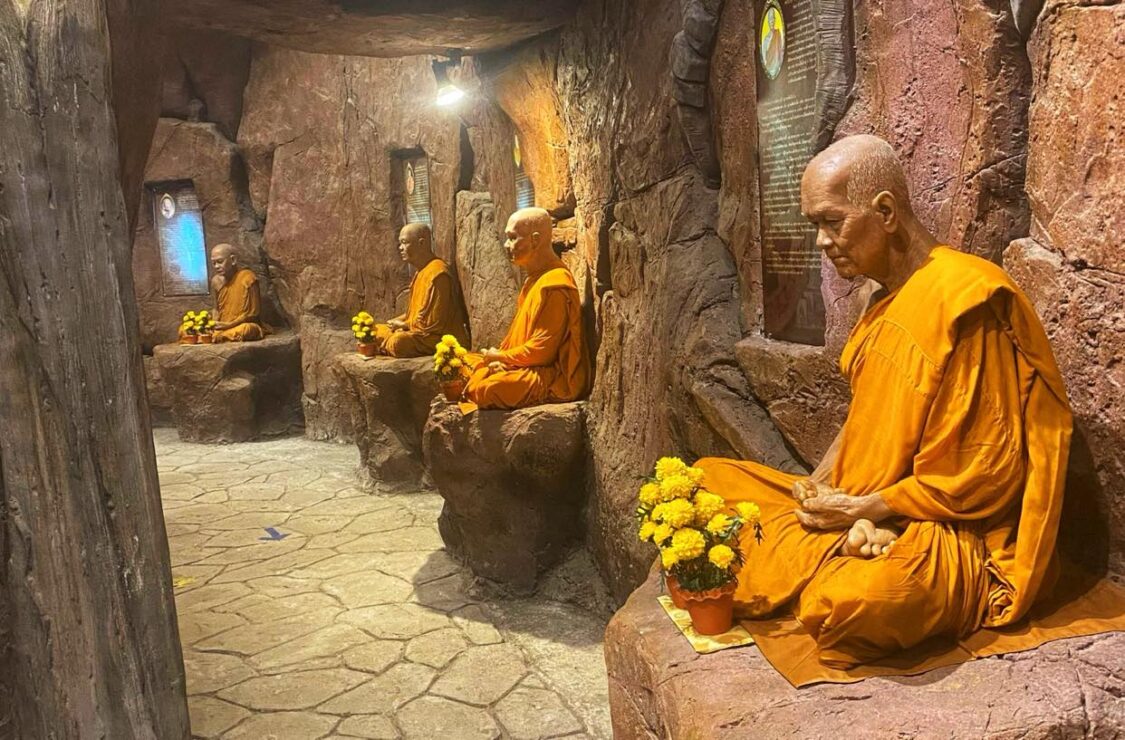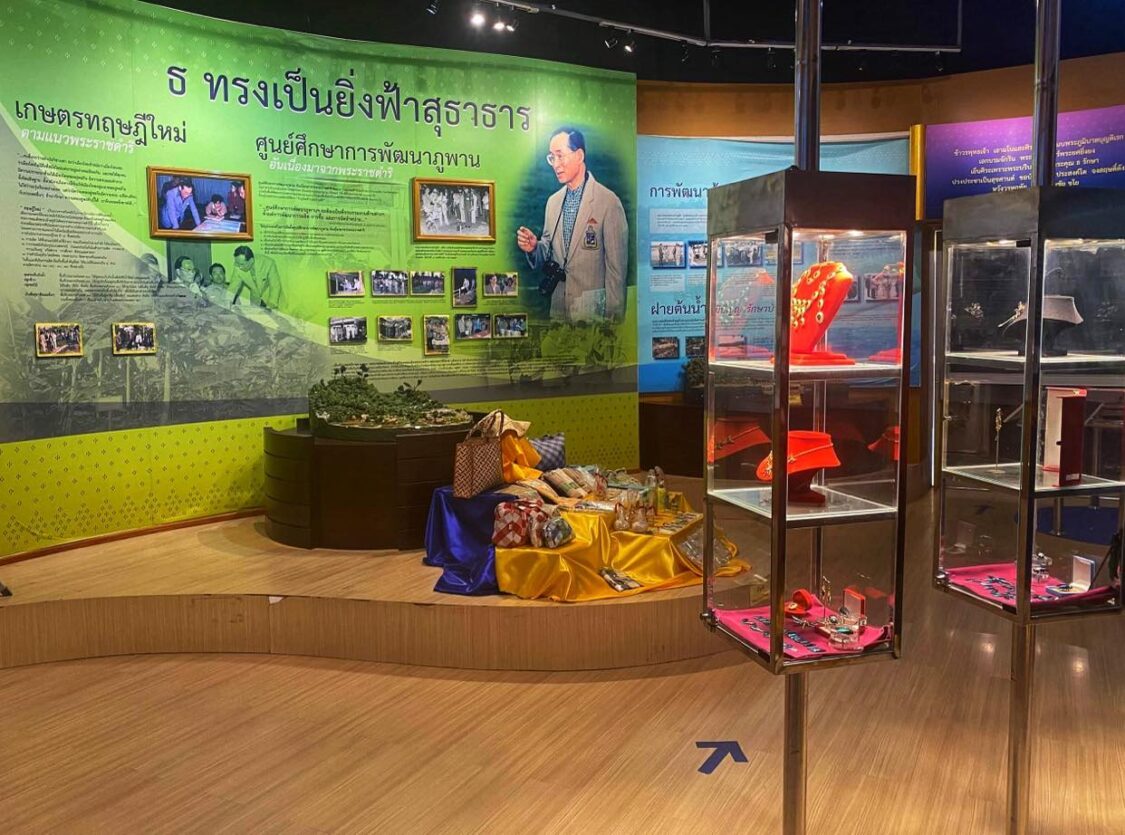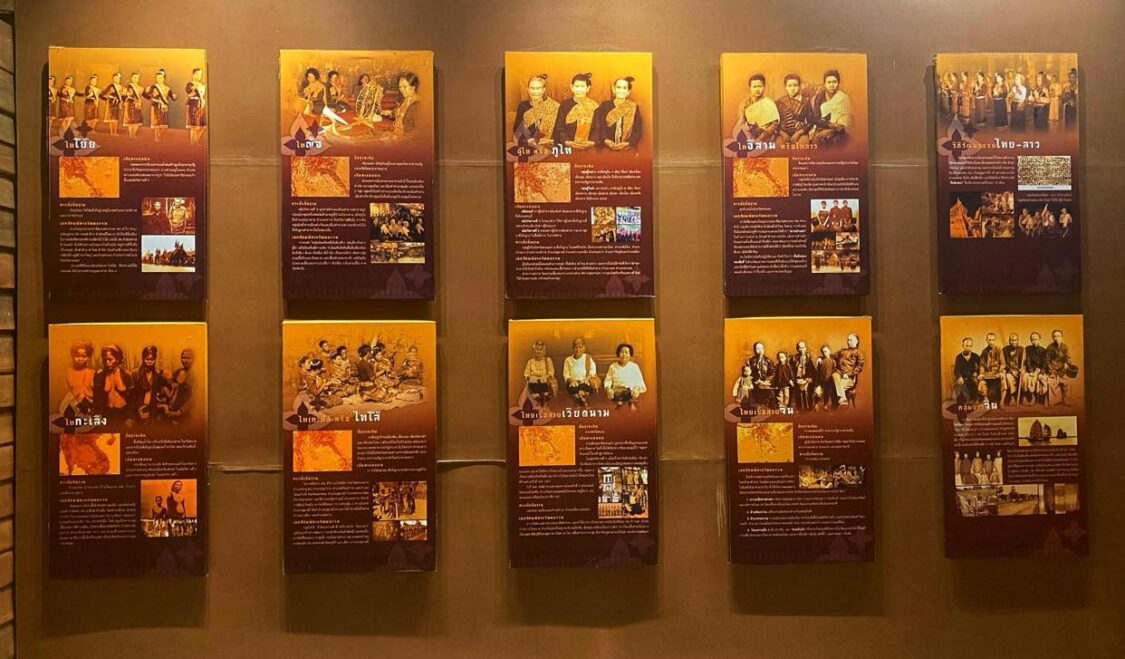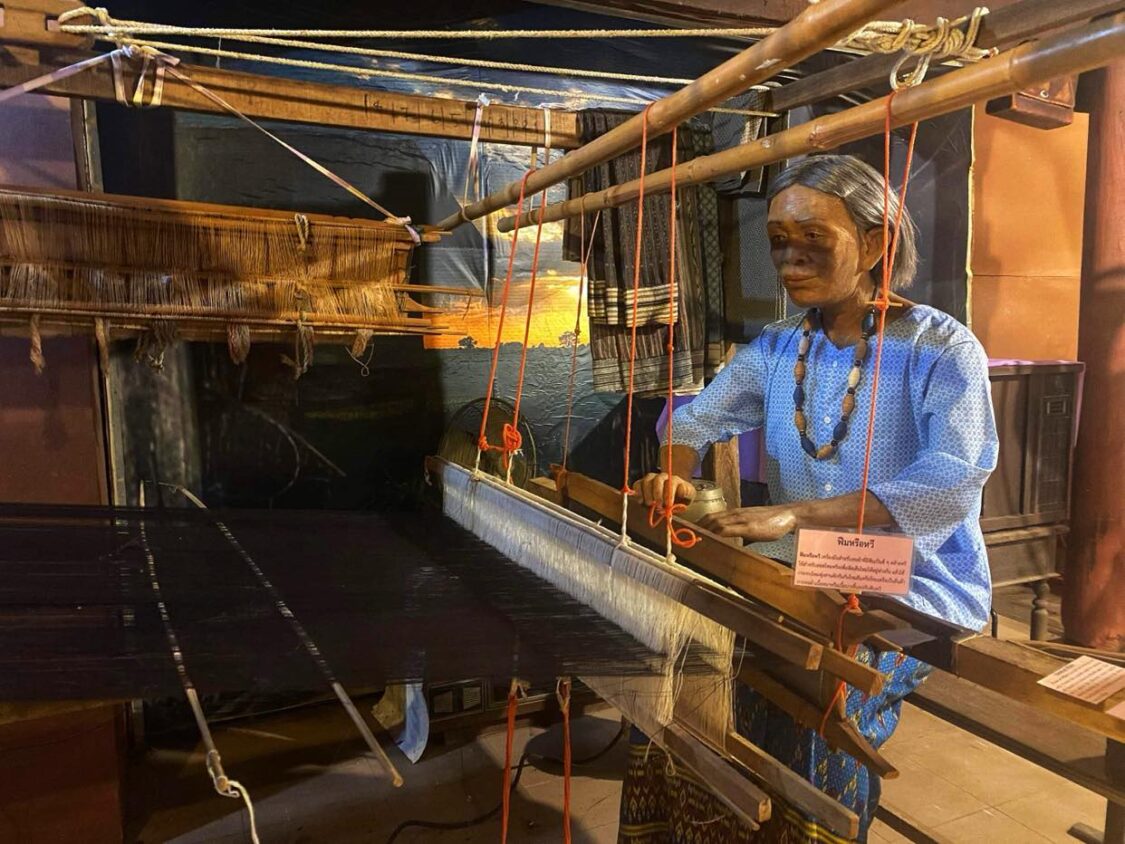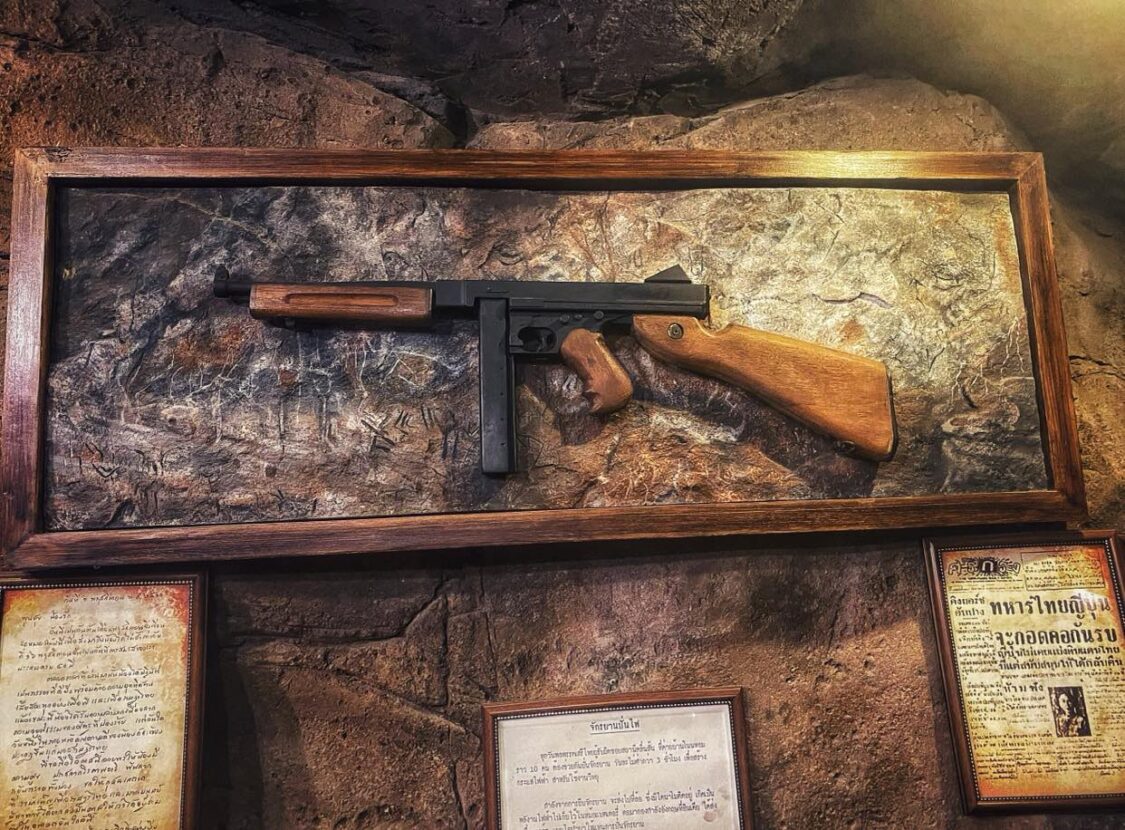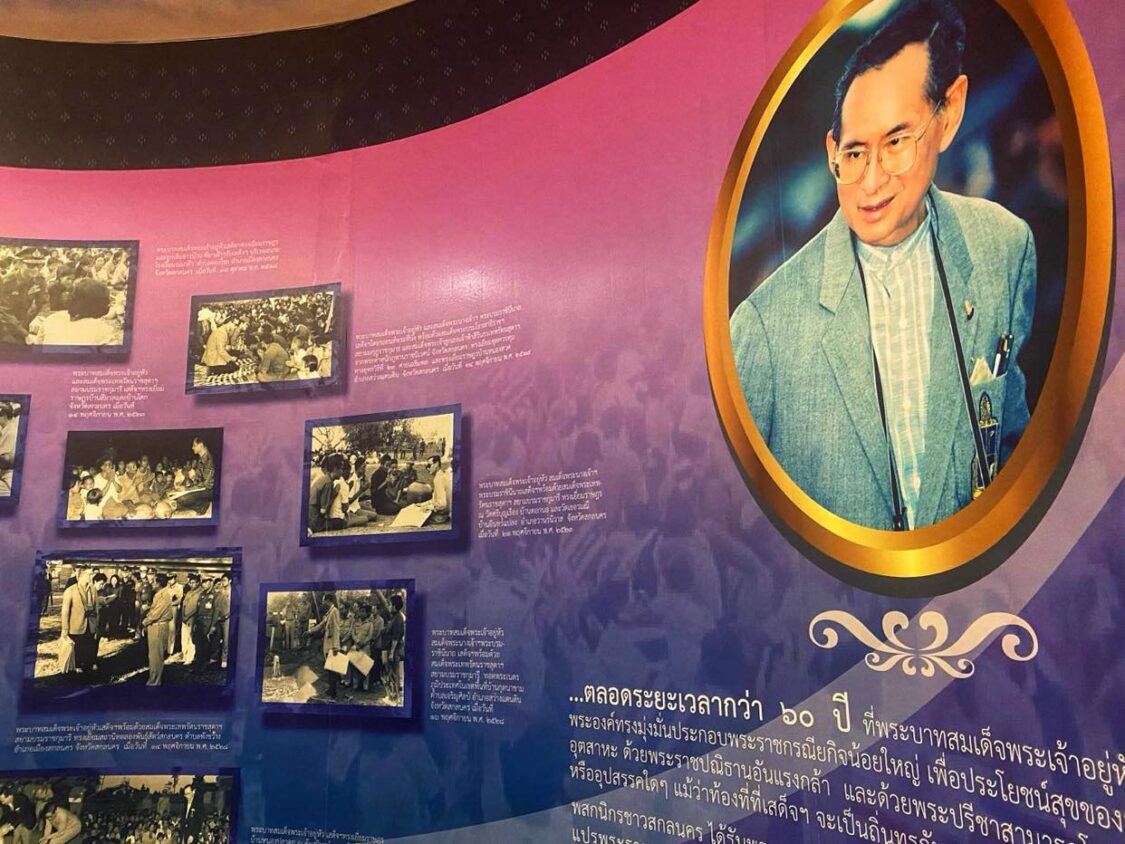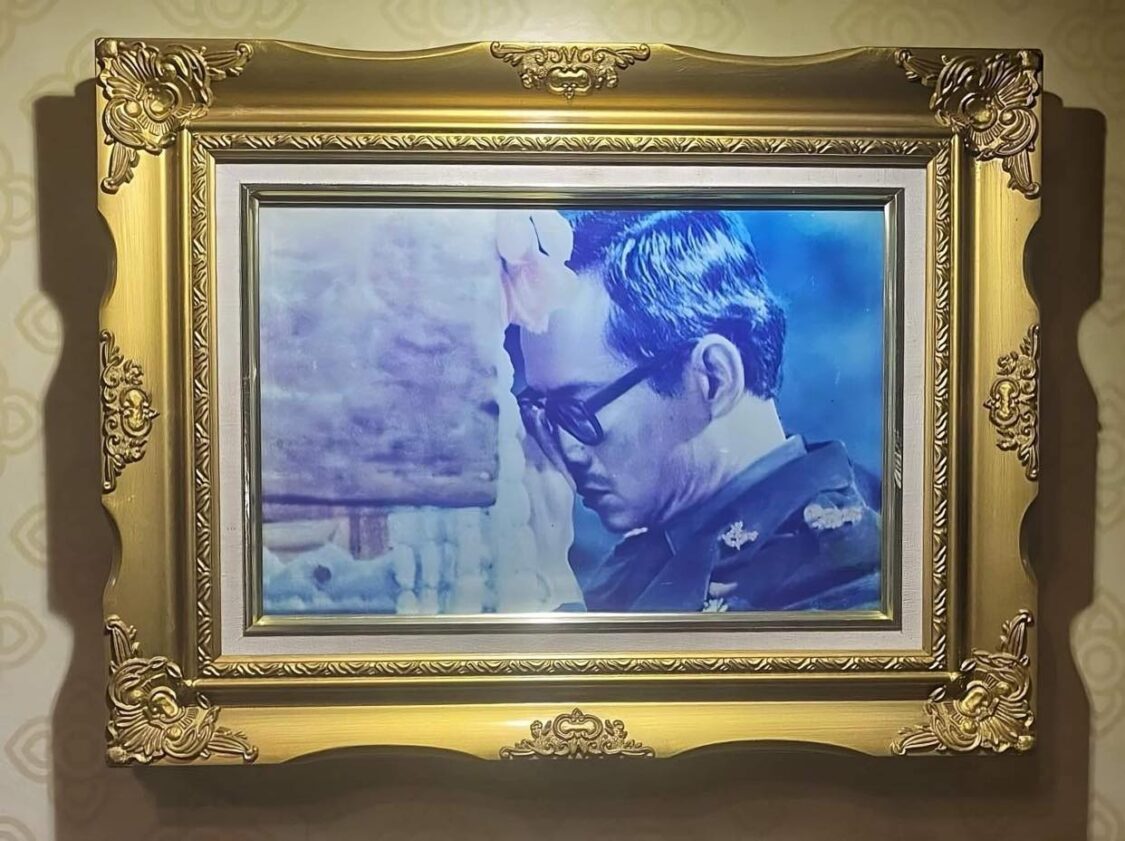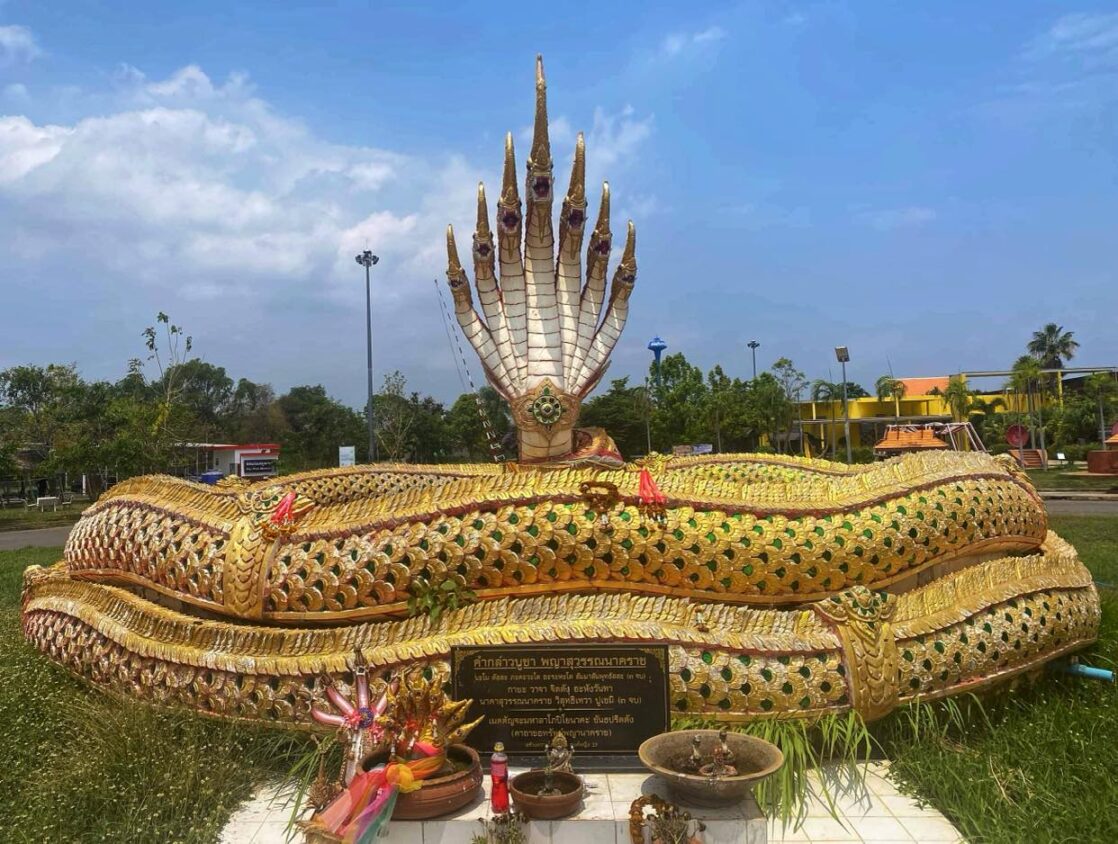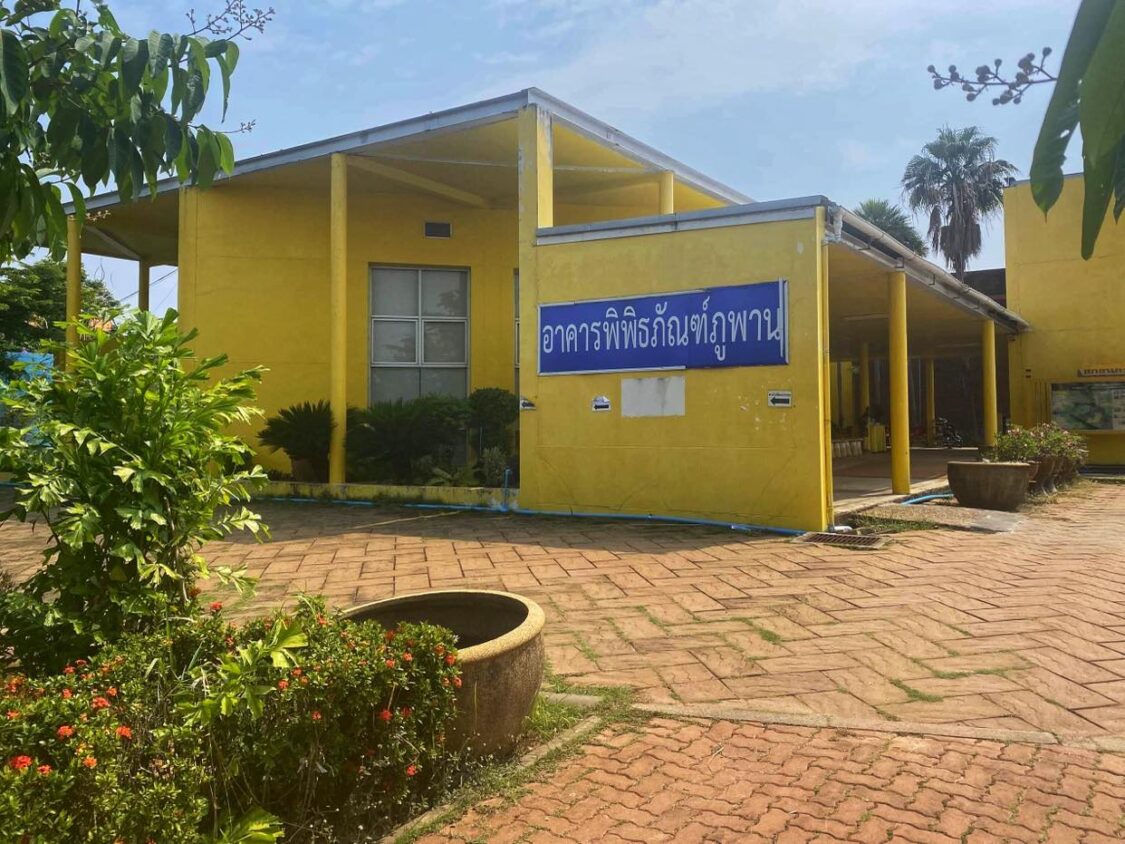Description
The Phu Phan Museum (พิพิธภัณฑ์ภูพาน) in downtown Sakon Nakhon celebrates the culture, people, and natural beauty of Sakon Nakhon province, with a special emphasis on the Phu Phan Mountain region.
This government-sponsored museum is divided into different "zones" which do an excellent job of highlighting why Sakon Nakhon is considered by many to be the jewel of Northeast Thailand.
Your free tour will begin with an optional video presentation (in Thai), which covers the history of Sakon Nakhon. Then you can walk through the different zones which are housed in separate buildings.
These zones include exhibitions on King Bhumibol Adulyadej's and Queen Sirikit's work in in helping develop Sakon Nakhon, which includes rarely seen photographs, such as the HM the King in deep grief beside the coffin of his friend, the revered Sakon Nakhon monk, Ajarn Fan Acharo.
Another zone includes a cave with lifelike sculptures of 8 famous forest monks who had deep ties to Sakon Nakhon, including Phra Ajarn Man Phurithatto, the co-founder of Thailand's Forest Tradition of Theravada Buddhism, and Phra Ajarn Maha Bua Yansampanno, a leading disciple of Ajarn Man.
At the Phu Phan Museum, you'll also learn about the 11 tribes who immigrated to Sakon Nakhon during the 19th century (such as the Phu Thai and Thai Yoi); the making of Sakon Nakhon's famous wax castles; the art of Isaan weaving, Indigo dying, and mak mao wine making; the Seri Thai freedom movement which had a hub in the Phu Phan Mountains during World War II; local flora and fauna; ancient dinosaurs that once prowled the region; and more.
The only drawback for foreigners visiting the Phu Phan Museum is that everything is exclusively in the Thai language, except for a few minor exceptions. However, you can take advantage of the camera function in Google translate, point your camera at the signs and posters, and get a rough English translation that's good enough for a basic understanding of what's been written.
You'll know that you have arrived at the Phu Phan Museum when you see the large Naga sculpture in front of the museum. After you park, you'll walk toward the yellow museum building (not the Planetarium). Don't be misled by the arrows you see pointing down the left wall of this building. You want to walk around to right of that wall and enter in the front of the building.


